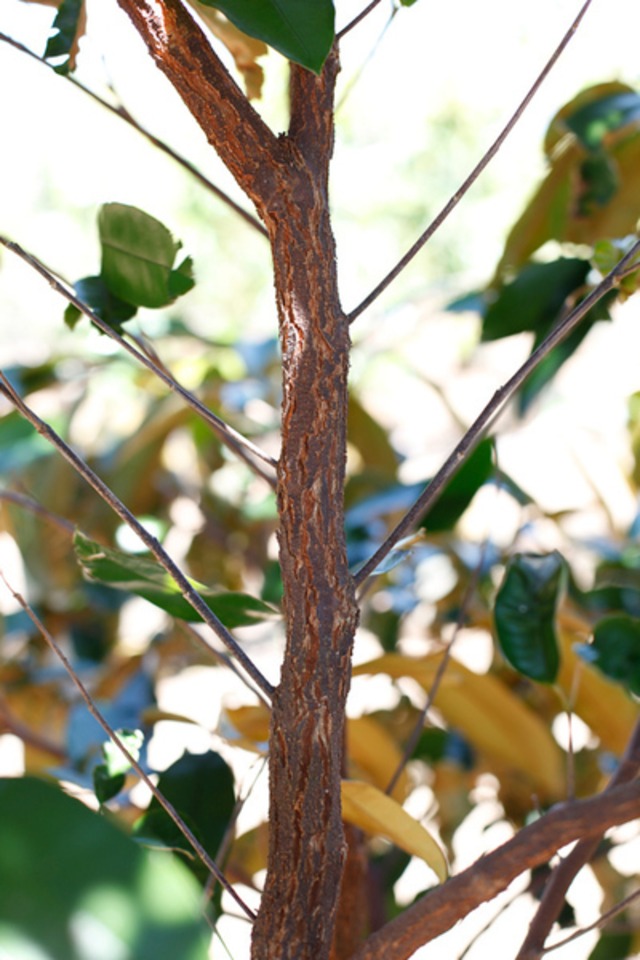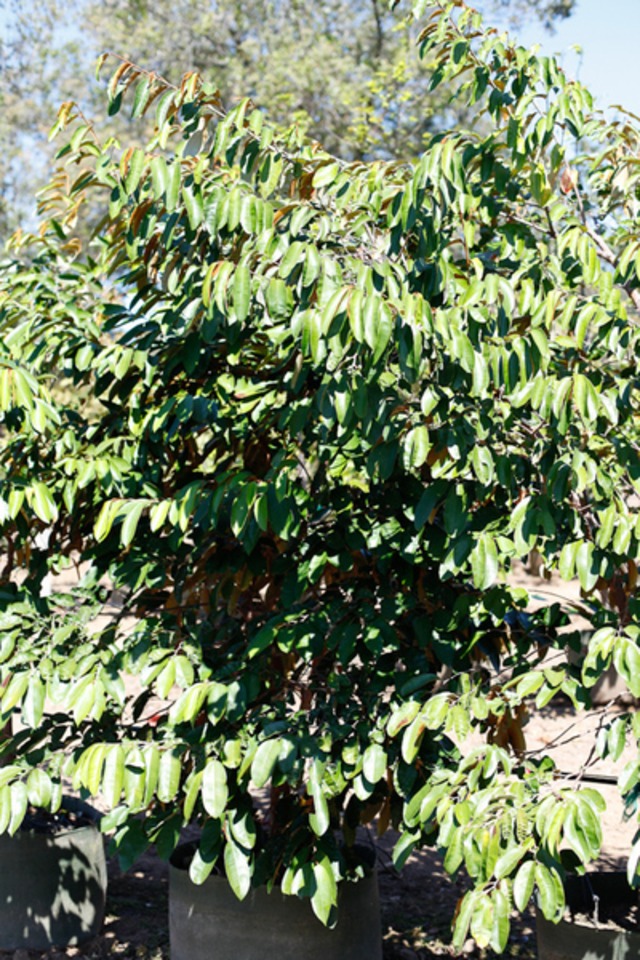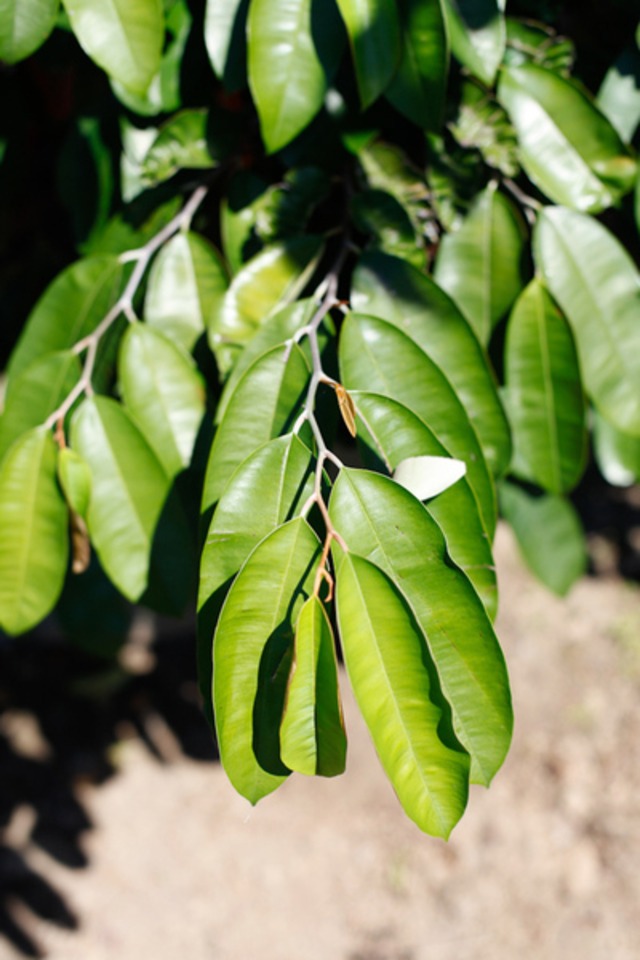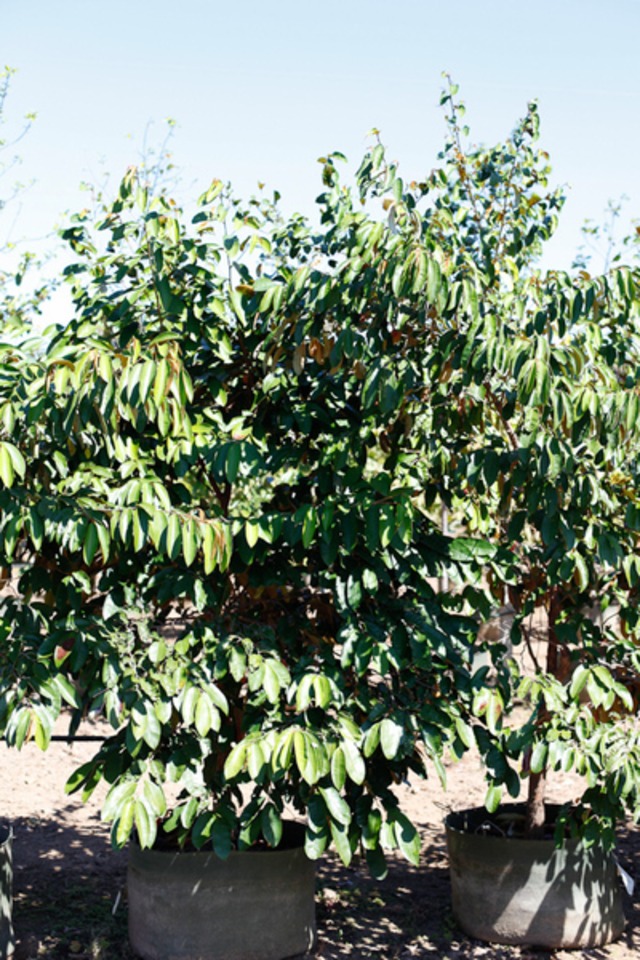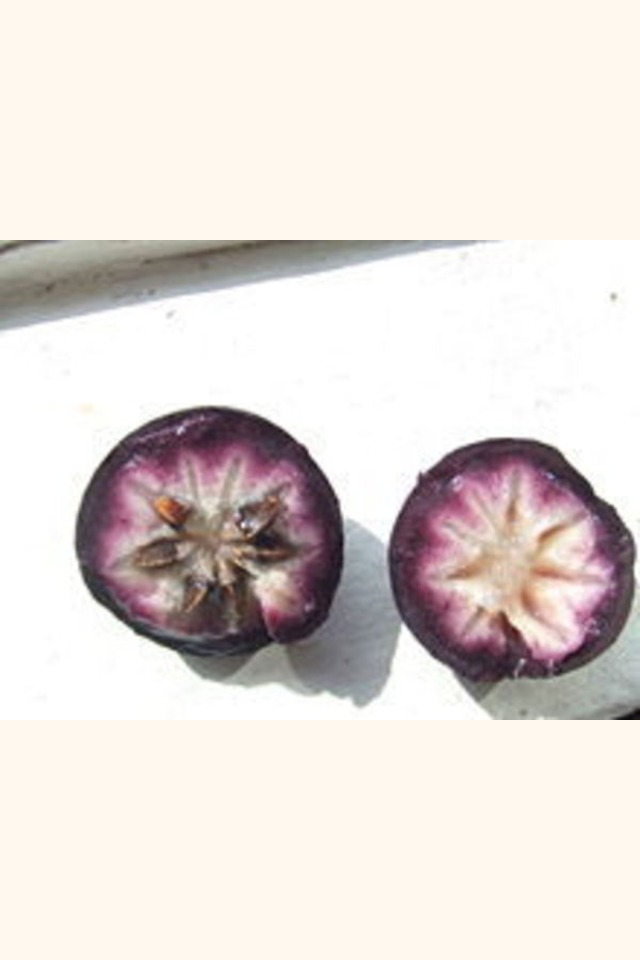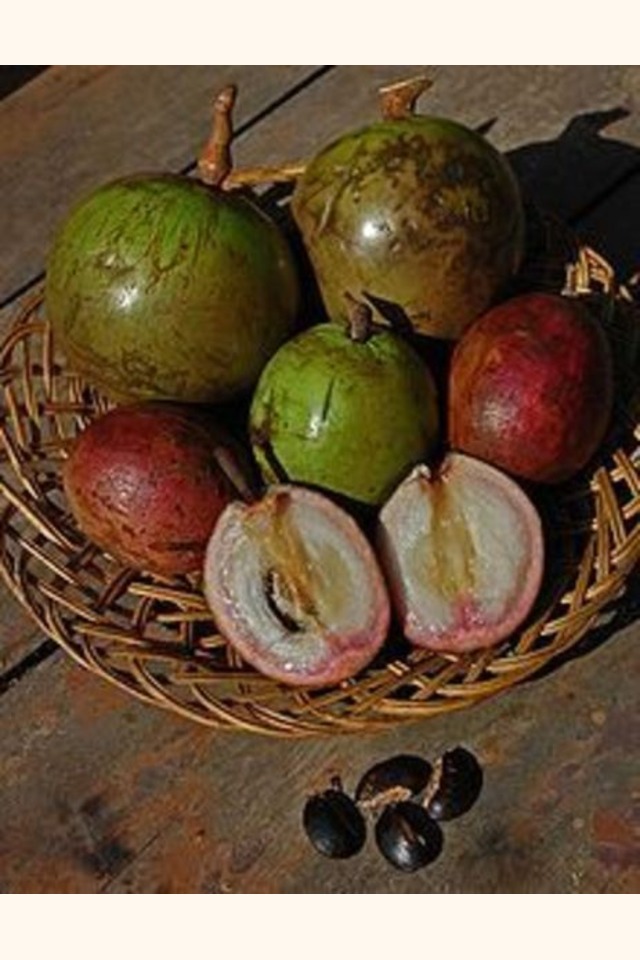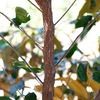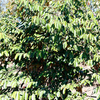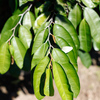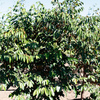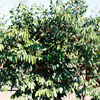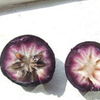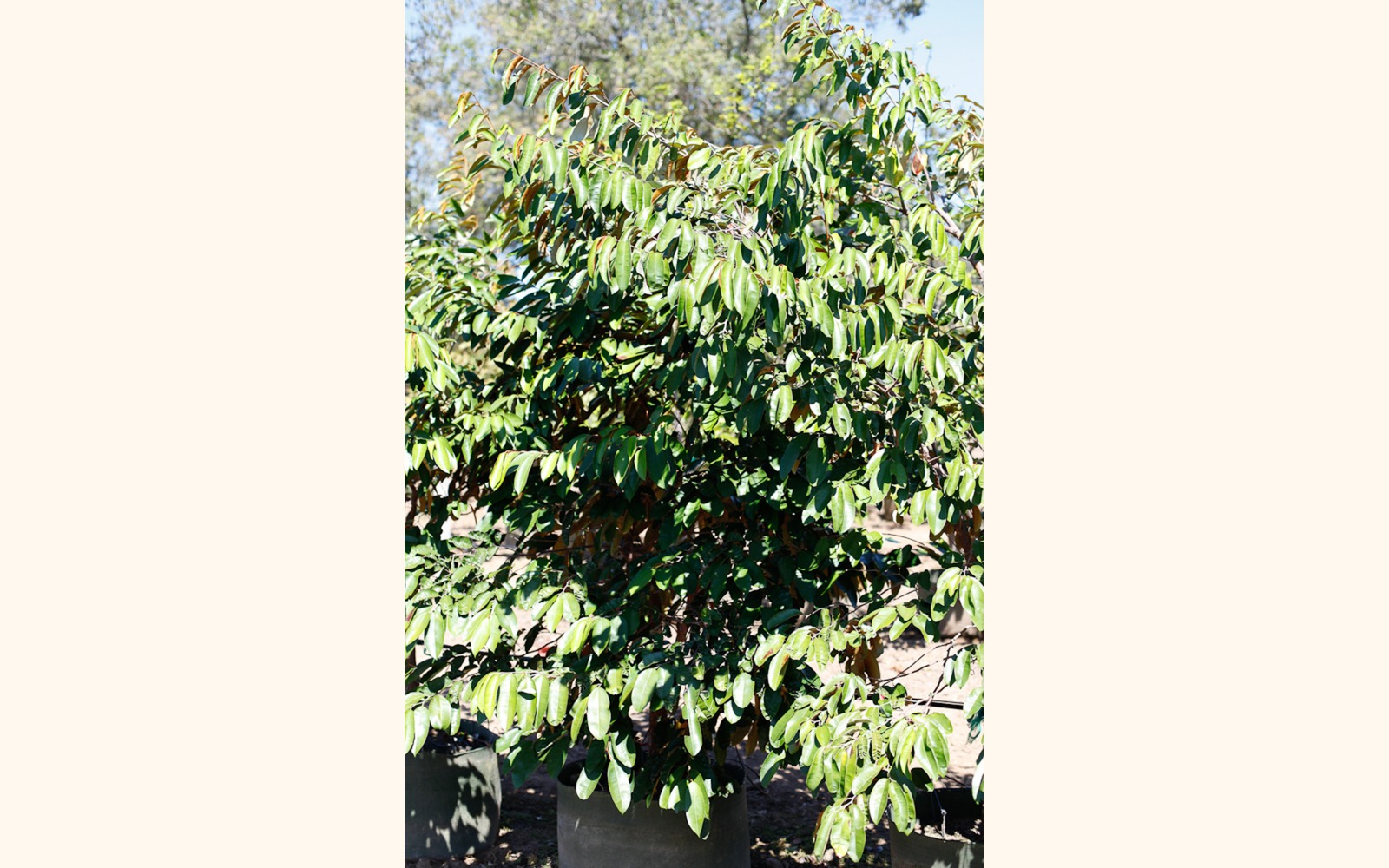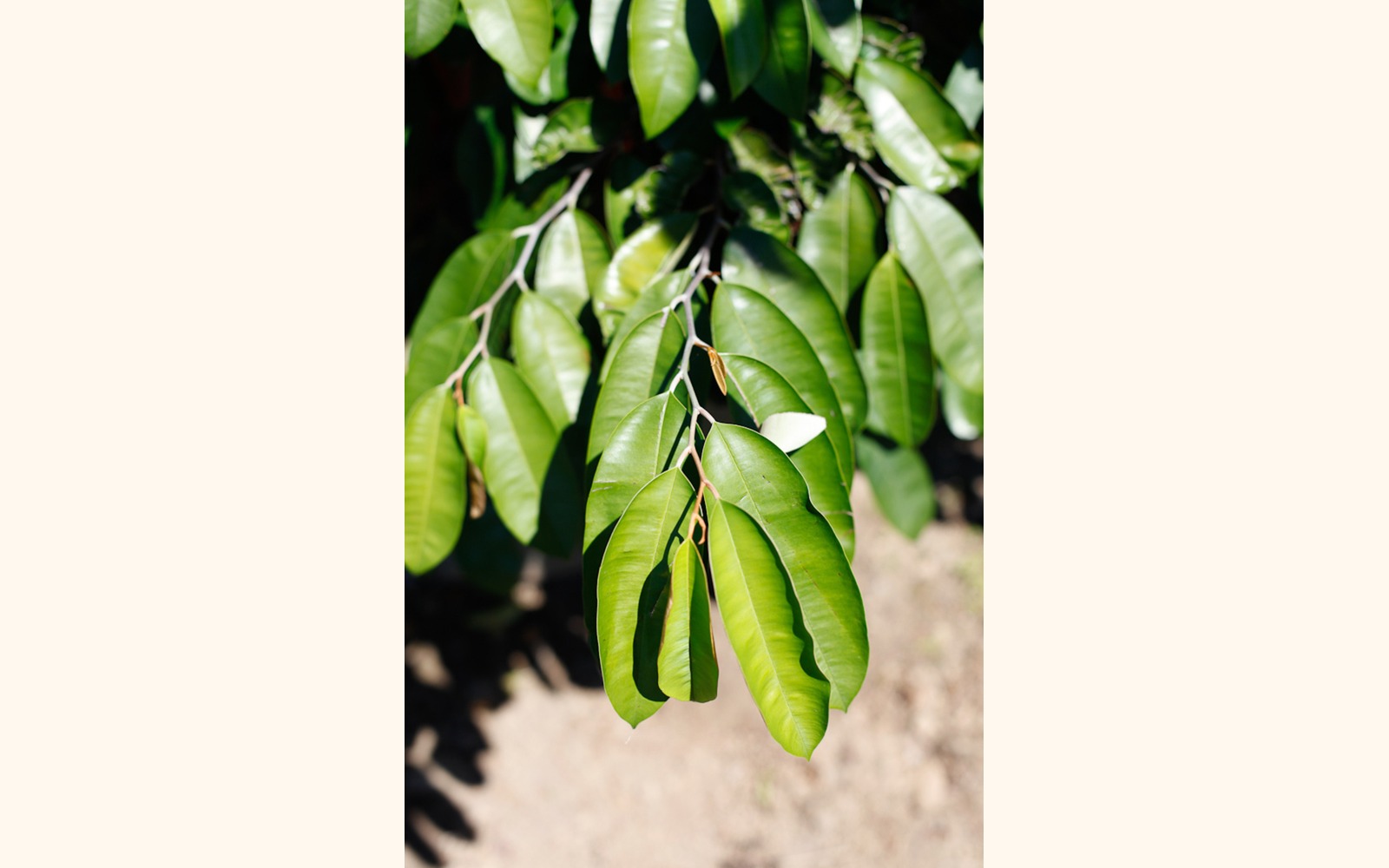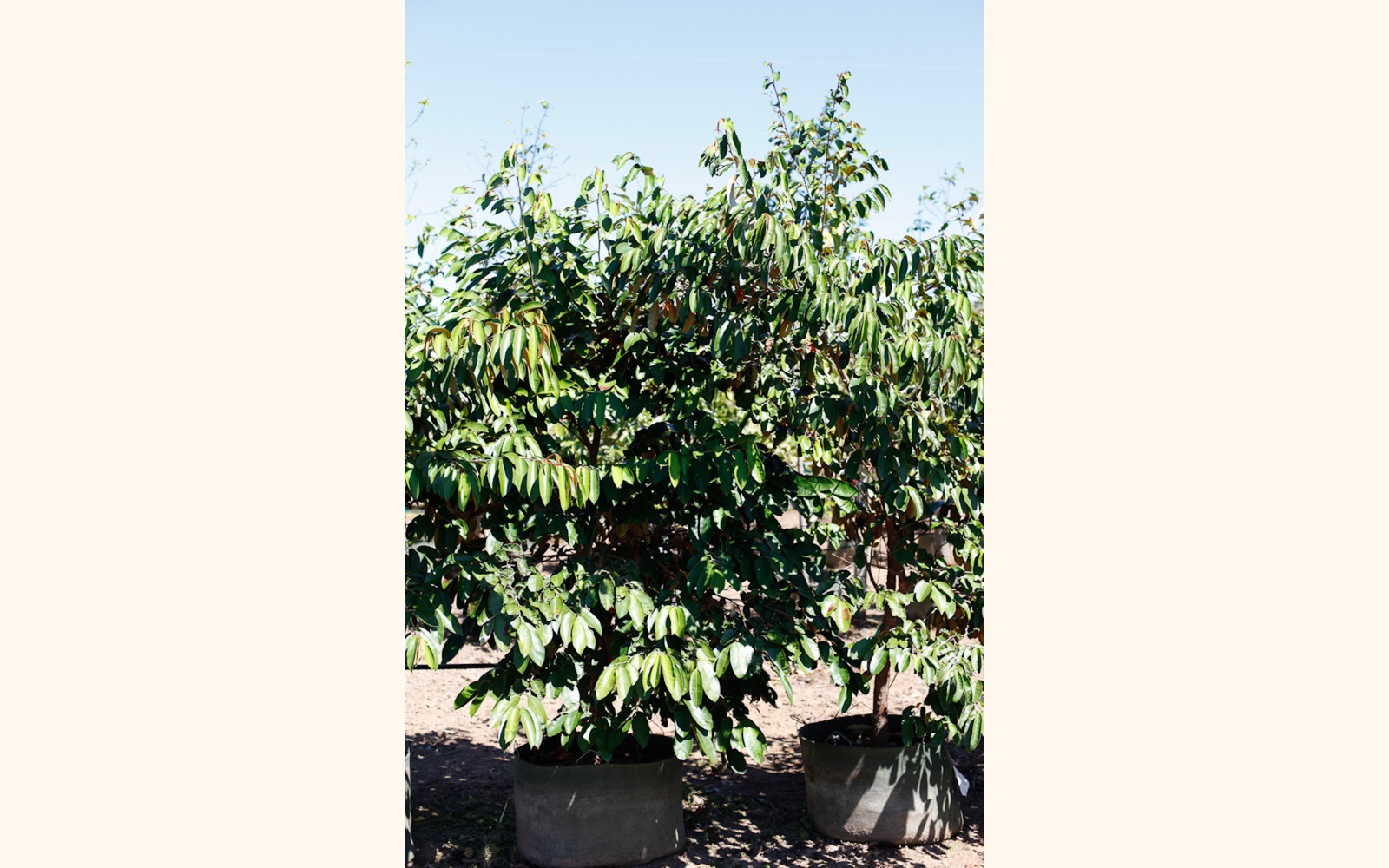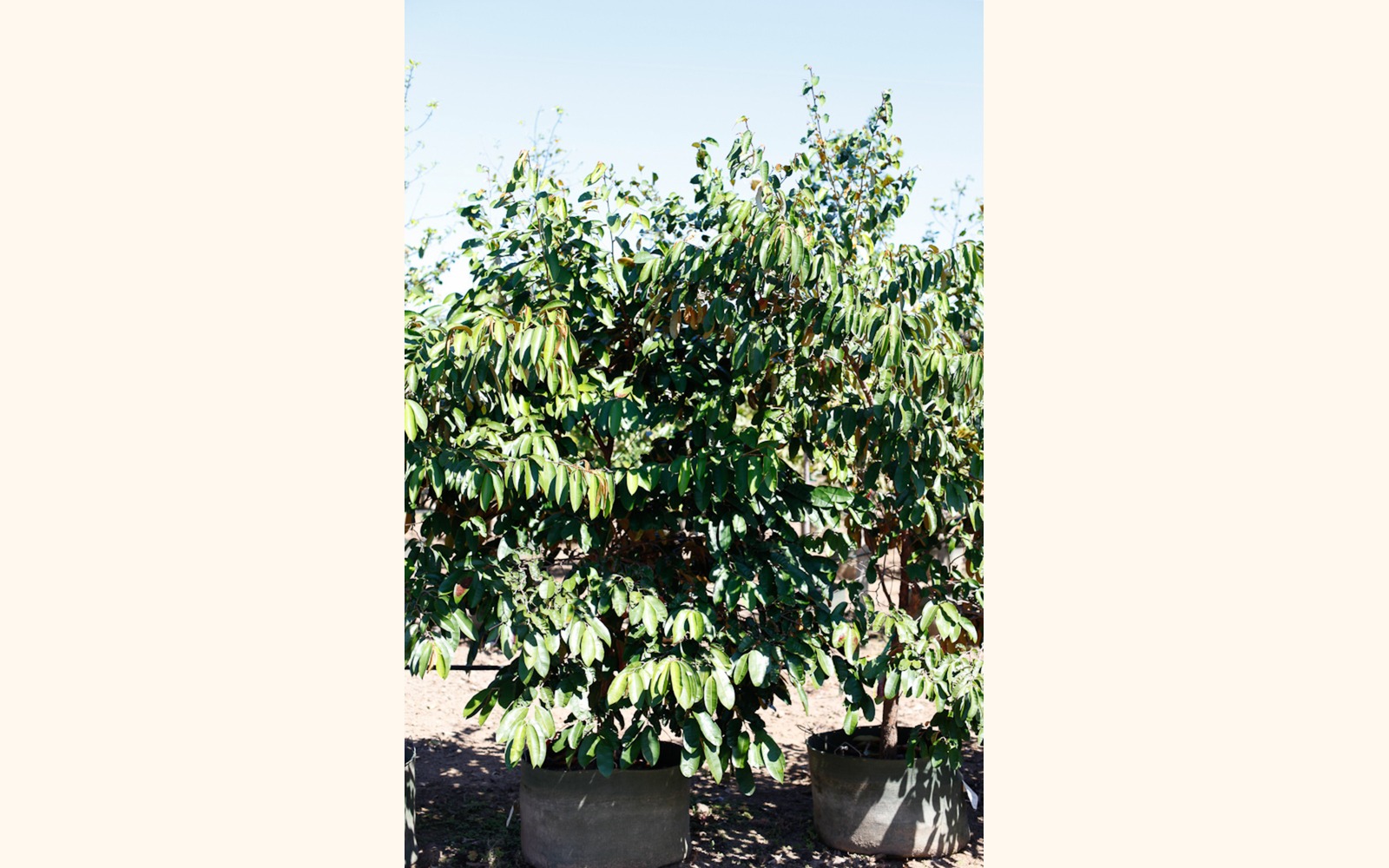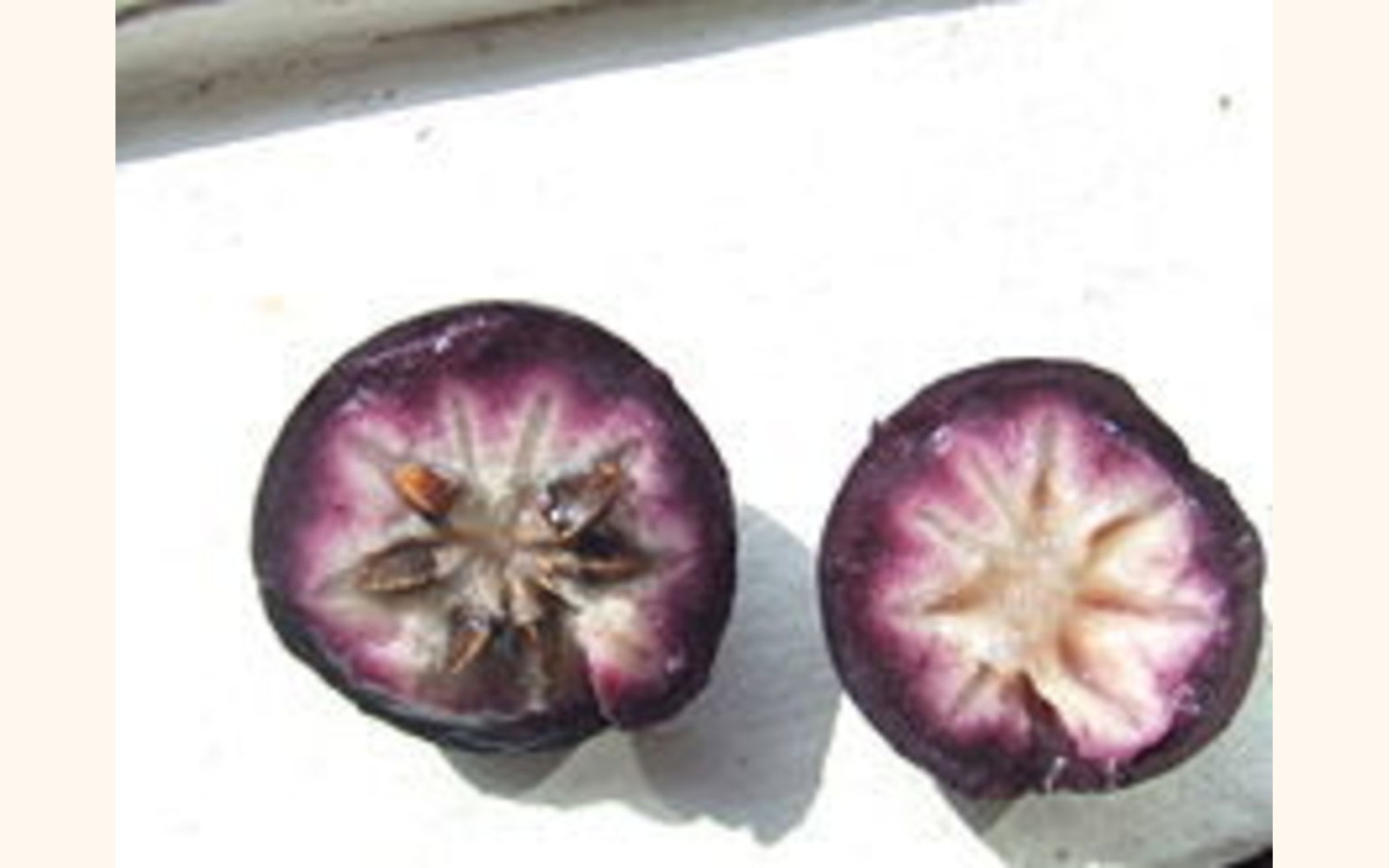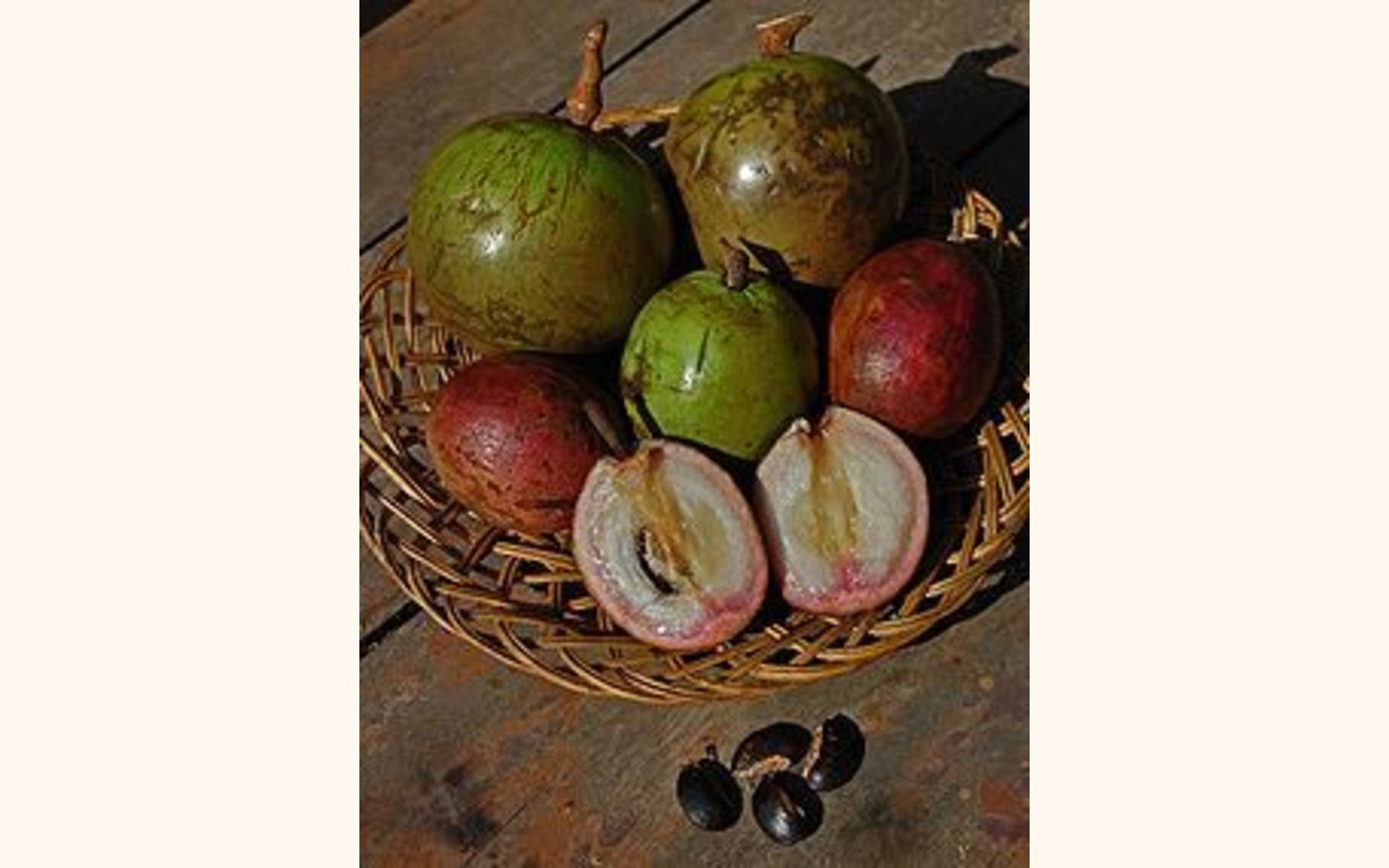
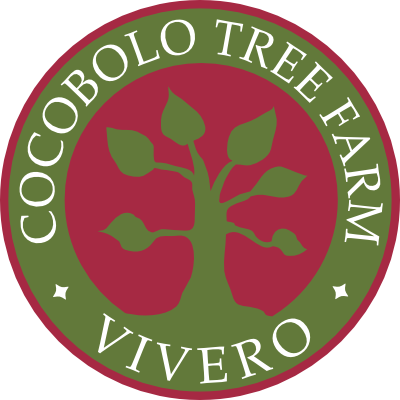
Star apple , Caimito
This tree has lovely leaves and edible fruit. Cocobolo Tree Farm carries the purple variety.
Chrysophyllum cainito is a tropical tree of the family Sapotaceae. It is native to the Greater Antillesand the West Indies. It has spread to the lowlands ofCentral America and is now is grown throughout the tropics, including Southeast Asia.[1] It grows rapidly and reaches 20 m in height.
It has numerous common names including cainito,caimito, star apple, golden leaf tree, abiaba,pomme du lait, estrella, milk fruit and aguay. It is also known by the synonym Achras cainito. InVietnam, it is called vú s?a (literally: breast-milk).
The leaves are evergreen, alternate, simple oval, entire, 5–15 cm long; the underside shines with a golden color when seen from a distance. The tiny flowers are purplish white and have a sweet fragrant smell. The tree is also hermaphroditic (self-fertile).
It has round, purple-skinned fruit that is often green around the calyx, with a star pattern in the pulp. Sometimes there is a greenish-white or yellow variety of the fruit. The skin is rich in latex, and both it and the rind are not edible. The flattened seeds are light brown and hard. It is a seasonal fruit bearing tree.
The fruits are delicious as a fresh dessert fruit; it is sweet and best served chilled. Infusions of the leaves have been used against diabetes and articular rheumatism. The fruit has anti-oxidant properties.,[2][3] The bark is considered a tonic and stimulant, and a bark decoction is used as an antitussive. http://en.wikipedia.org/wiki/Chrysophyllum_cainito
Plant Characteristics
Leaves
dark leaves on one side, fuzzy bronze leaves on the other side.
Additional Information
References
http://stuartxchange.com/Caimito.html
Wikepedia
http://en.wikipedia.org/wiki/Chrysophyllum_cainito









